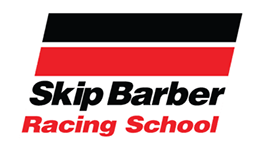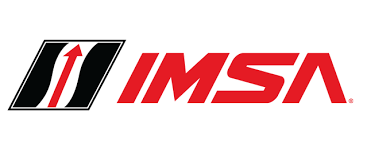The SimCraft Method of Motion Simulation, and why #physicsmatter
sim-u-la-tion noun \sim-yə-ˈlā-shən\
1: the imitation of a real-world process or system over time.
2: something that is made to look, feel, or behave like something else
especially so that it can be studied or used to train people.
Since 1998, SimCraft has been developing a method, or architecture, for motion simulation that uniquely simulates how vehicles move in racing simulator and flight simulator applications. Using a design philosophy that closely mirrors how Earth physics work, SimCraft has developed a motion simulator approach that both improves fidelity for high end applications, while creating the opportunity for greater adoption of motion for race, aviation, and driving simulators. The resulting simulation experience of any SimCraft motion product, whether that product have 1 degree of freedom or all six in a full motion application, feels natural because the methods of achieving the simulation intentionally follow the way all vehicles rotate and translate in the real world; in earth physics, along the six degrees of freedom. If you have never driven a “realistic motion simulator”, you have found the information, and the method you have been seeking. Read on!
The three rotational degrees of freedom (roll, pitch, and yaw) occur in two horizontal axes, fore/aft, and left/right and in one vertical axis, up/down. The three translational degrees of freedom, (surge, sway, and heave) operate linearly along the same 3 rotational axes, but instead of rotating around the axes, the three translational degrees of freedom move along the two horizontal and one vertical axis. In Earth Physics, the three axes all intersect at the center of mass, or center of gravity. ALL vehicles rotate and translate about or near their center of mass, both in the air and on the ground. Aerodynamics and car suspensions are external factors, among others, that affect the variation in movements away from the center of mass, but largely the variations are minimal and the center of gravity is the defining point of motion on all degrees of freedom.
It is with this core defining principal that all SimCraft motion applications are derived.
How do *all* SimCraft motion simulator applications compare?
1. Physics Based Rotations and Translations at the Center of Mass
2. Full cockpit motion, *always*
3. Simple Machines and Smart Mechanics
4. Independent Degrees of Freedom
5. Best in Class Software for Management and Control
Motion Simulation based on physics, with rotations and translations at the Center of Mass (aka Center of Gravity)
Center of Mass Rotation – The SimCraft method for full motion simulation is based on the center of gravity (CoG) being aligned with the center of rotation, in an independent axis control system. Real world vehicles operating in an Earth physics environment also behave in this same way. While aerodynamics and suspensions play roles in where rotations occur, the CoG will always be the core principal as to where motions occur.

SimCraft motion is modeled with the same set of mutually perpendicular Inertial (or Body) Axes: roll, pitch and yaw. When the CoG and pivot are coincident the system is in rotational equilibrium(stable) resulting in a small (near zero) moment of inertia. What does this mean for the resulting motion experience? The amount of torque required to start, stop, and change rotations is minimal; allowing for zero perceived latency from controls in to the motion response out. Since what you see on the screen is what you will feel in the seat, the organic rotations are the same experience as natural vehicle rotations and translations.
You HAVE to Move the Cockpit for a Realistic Motion Simulator
The cockpit, where the interactive user is seated, as well as the controls such as racing wheel, pedals, and shifter, moves within this independent axis motion system in up to 6 degrees of freedom; Roll, Pitch, Yaw, Surge (front to back), Sway (Left to Right), and Heave (Up and Down). It is important to understand that the entire cockpit moves within all SimCraft motion systems. This might seem obvious to some, but there are products on the market that just move the seat around, leaving the controls and visuals stationary.
In all SimCraft based motion systems, the whole cockpit moves with the occupant, and the relative position (and connection) between the driver and their steering wheel, shifter and pedals remains constant. The entire cockpit moves to simulate weight transfer, track camber, surface features, terrain elevations, oversteer, understeer, etc. In a real car, the driver is one with their cockpit. They know where the steering wheel, shifter, pedals are at all times and the position between the driver and their controls never changes.
SimCraft motion simulators also have an active visual system that moves with the cockpit and driver. The reason for this is to keep the relative position and orientation between the driver and the windshield and mirrors constant. Drivers are always looking out the windshield on a relative plane with the car, in a constant, expected, relationship. If the car goes up a huge bank, like you would find at Daytona for instance, the relative plane between the driver’s eyes and the car itself, and thus the windshield, remains the same as the car travels up and around the 30+ degree banking.
Simple Machines and Smart Mechanics
 The smooth, organic rotations of the rotational systems of roll, pitch, and yaw are made possible by a proprietary rotational bearing system which create independent axes of rotation. Each axis of rotation incorporates a series of bearing assemblies which are designed to provide frictionless rotation about the axis. These bearing assemblies also support the entire weight of the system and itsoccupant, allowing the motion control system to perform at high levels. The smooth, organic rotations of the rotational systems of roll, pitch, and yaw are made possible by a proprietary rotational bearing system which create independent axes of rotation. Each axis of rotation incorporates a series of bearing assemblies which are designed to provide frictionless rotation about the axis. These bearing assemblies also support the entire weight of the system and itsoccupant, allowing the motion control system to perform at high levels.
Linear or translational motions of surge and sway take advantage of linear bearing system, also designed for frictionless motions. The bearing/rail combinations support the weight, and the electromechanical actuators move the load, only having to manage inertia since the bearing of the load is up to the mechanics.
Electronic and Electromechanical
The actuators utilized in the SimCraft method are electromechanical and come in several sizes from several suppliers. Each of the actuators utilized are coupled with the smart design of the mechanical system allowing for ultra-fidelity. The position from SimCraft’ssoftware is passed and enacted upon instantly, (less than 1ms), thus the perception of zero latency in motion response to a command. SimCraft does not use hydraulics or pneumatic for motion simulation due the inherent delay of these control methods. Our supplied actuators are rated for 100% duty cycle, 50,000 hours MTBF, and are guaranteed at full replacement for three years.
Independent axis control on up to 6 degrees of freedom, including roll, pitch, yaw, surge, sway, and heave.
Independent Axis Control by the mechanical separation of the degrees of freedom
To have isolated and independent control of any of the degrees of freedom in the SimCraft method of motion simulation, a designed system of mechanical separation for each degree of freedom is required. What this means, is that all motion cues on any of the degrees of freedom in the application, are not affecting any of the other degrees of freedom in the system. In practice, what this requires is that all degrees of freedom have complete and total control without interference or limitation from another degree of freedom in the system. Roll doesn’t affect pitch, pitch doesn’t affect yaw, and so on.
In order to achieve this, SimCraft applications always utilize a series of bearings and simple machine concepts to ensure that all degrees of freedom are *physically* not connected to each other. Because all degrees of freedom are separated mechanically, the software control of each degree of freedom, performed simultaneously, is truly independent.
Mechanical advantage leads to lower forces, higher actuator performance
Because every SimCraft unit takes advantage of a system designed around physics using simple machines and smart mechanics, the load on any of the actuators, which is the component providing the force for the motion simulation, is designed on purpose to be low. The result of this design allows the actuators and any required force to be reduced substantially. Since the actuators are not stressed out with a load they can operate extremely efficiently managing only the inertia of the sim. The result to the user is instantaneous motion response, and ultra-fidelity.
Software Integration, Management, and powerful features
The physics based software interfacing to each of the racing and flight simulation titles that the SimCraft method works with has been designed to be incredibly efficient, allowing for positioning of the system within less than 1ms from the time of the physics extraction. This keeps the controls, visuals and what you feel perfectly synced. Each integration module has its own default motion profile which can then be modified and adjusted in real time as the system is in active racing or flight usage. The XML based motion profile system allows various setups to be saved, stored, reused and shared.
Management of the interfaces is performed via the SimCraft Control Panel (aka CraftCon) which allows for easy enabling/disabling of interfaces, software updates, motion profile adjustment either offline or in real-time during an active simulation. CraftCon also contains easy access to common Windows functions, automatic motion control error resetting, how to guides and videos, and documentation.
An extensive API and SDK for fully customized motion integrations is also available.
No video presentation, physics explanation, or photography can demonstrate the performance of the SimCraft method of simulating motion. You must climb in the cockpit and experience the system first hand, behind the wheel, to appreciate the obvious difference over every other motion simulator system. Schedule a demonstration today!
|
|






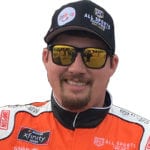
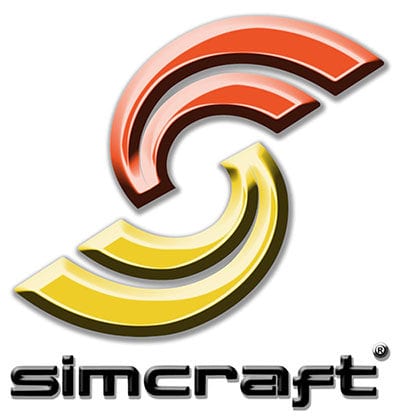




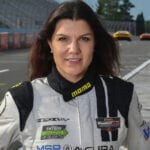




 The smooth, organic rotations of the rotational systems of roll, pitch, and yaw are made possible by a proprietary rotational bearing system which create independent axes of rotation. Each axis of rotation incorporates a series of bearing assemblies which are designed to provide frictionless rotation about the axis. These bearing assemblies also support the entire weight of the system and itsoccupant, allowing the motion control system to perform at high levels.
The smooth, organic rotations of the rotational systems of roll, pitch, and yaw are made possible by a proprietary rotational bearing system which create independent axes of rotation. Each axis of rotation incorporates a series of bearing assemblies which are designed to provide frictionless rotation about the axis. These bearing assemblies also support the entire weight of the system and itsoccupant, allowing the motion control system to perform at high levels.